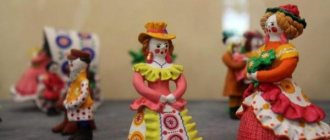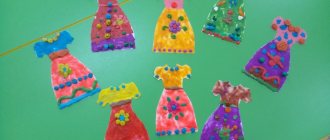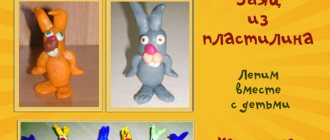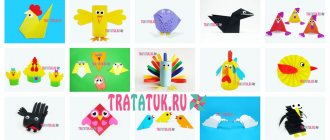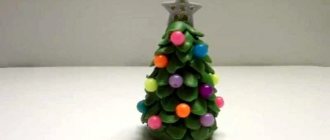Progress of the lesson.
Educator: Guys, someone is coming towards us. (Opens the door, Grandma Riddle enters)
.
Educator: We have a guest today.
Grandma-Riddle: Hello, children!
Grandmother-Riddle: Do you recognize me?
- Children's answers. ( The children tell where they saw her , where they met her.)
Grandmother-Riddle: Guys, let's sit side by side and talk well. I want to ask you a few riddles. And you must remember which Russian folk tale this line , which main characters of this tale you remember most.
First riddle: Guys, what fairy tale are these words : “Catch, catch, fish, big and small”
?
Second riddle: From what fairy tale do the words “I sit high, I look far”
?
Third riddle: From which fairy tale are the words : “Who ate from my cup, who sat on my chair?”
.
Grandma-Riddle: No, not this fairy tale .
— The children convince the Riddle Grandmother that she has mixed up the fairy tales .
Grandma-Riddle: Oh, I’m getting old, I forget everything. And tomorrow I have to go see the kids. They are waiting for me, they want to solve riddles, but I am old, everything is confused in my head - I remember the riddles, but I have forgotten all the fairy tales . Help me, because you are the biggest in kindergarten, you know a lot.
Educator: Don’t be sad, Grandmother-Riddler, now we’ll come up with something. What should we do, guys? How to help the Riddle Grandma understand fairy tales ?
II. Educator: That's right, guys, let's make scenes from different fairy tales so that the Riddle Grandmother can understand which fairy tale they belong to .
III. Educator: Guys, tell me what you will sculpt?
Questions for children (with the help of which the teacher helps clarify the content of the modeling , the sequence, and aims to find the most expressive means).
V. Independent work of children.
VI. Analysis of works. (The analysis is done by the Riddle Grandmother. She praises how interesting the stories turned out).
VII. The works displayed on the tray are given to the Riddle Grandmother so that she can show them to the kids.
Abstract on developing children's safe behavior skills based on the actions of fairy-tale characters Goal: To develop children's safe behavior skills based on the actions of fairy-tale characters. Objectives: teach to distinguish between bad deeds, treacherous advice,...
Summary of direct educational activities on FEMP in the middle group “Let's save fairy-tale heroes” Synopsis of direct educational activities on FEMP in the middle group “Save fairy-tale heroes” Description of work: this material.
Summary of the educational activity “Letters from the fairy-tale heroes Masha and the Bear” in the senior group Objectives: 1. Continue to introduce the whole and its parts, teach how to divide an object into two or four parts; clarify knowledge about forward and backward counting; knowledge.
Abstract of the OOD on FEMP “Tasks from fairy-tale heroes” in the middle group according to the Federal State Educational Standard. Compiled by the teacher of the first qualification category of MBDOU d/s No. 24, Krasnogorsk, Natalia Evgenievna Pelepelina. Goal: To promote.
"Neighborhood for fairy-tale heroes." Summary of a lesson on constructive-model activity in the preparatory group Constructive-model activity in the preparatory group Topic: Microdistrict for fairy-tale characters. Goal: to develop construction skills.
Modeling of fairy-tale characters. Lesson summary “Let's show moms that we can sculpt” Modeling on the topic “Let's show moms that we can sculpt” Program content. Arouse children's interest in the activity, find out how children use it.
Summary of a mathematics lesson in the preparatory group “Journey to the Land of Fairy-tale Heroes” Summary of a mathematics lesson in the preparatory group “Journey to the Land of Fairy-tale Heroes” Developed by the teacher of the MADO No. 4 Ermolaeva.
Theatrical performance “The Adventure of Fairy-tale Heroes in the Land of Road Signs” Purpose of the event: To develop in children the basic skills of safe behavior on city streets using theatrical activities.
Source
Progress of the lesson.
1. Creating a game situation.
Children enter a fairy forest . They are considering.
- Where do you think we ended up?
-What is missing here?
2. Report the topic of the lesson .
-Guys, what animals will we sculpt ? (bear, fox, hare, squirrel)
-What can you sculpt ? (from plasticine, from salt dough)
Today we will sculpt from salt dough .
3. Examination of the sequence of sculpting animals (on the screen)
- Guys, let's remember how we sculpted a bear , a fox, a squirrel, a bunny?
-How did we sculpt the bear ? (the dough is divided into three parts, from the first a body is sculpted in the shape of an oval, from the second - a head in the shape of a ball. They connect the head and body, stretch out the muzzle. The third part is rolled out in the shape of a cylinder and divided into two parts, then each into two more. We sculpt paws , rolling out the plasticine with straight movements, forming 4 rollers of the same thickness and length. Bend the lower paws, giving the figure a sitting position. Pinch off two pieces from the lower paws and roll two balls - these will be the ears, flatten them and connect them to the head. Make the eyes and nose with a stack , mouth)
— How did you sculpt the fox ? (we divide the plasticine into three parts. From the first part we make a body, at the base it is a cylinder, we roll it out with straight movements and bend it, cut it with a stack, and form legs with our fingers. We sculpt the head from a ball , stretch it out and sharpen it, making a muzzle, we sculpt by pulling plasticine out of the upper part of the head, form a pointed shape. Connect the body to the head and apply a stack to them. From the last piece of plasticine we make a long column - a roller, sharpen the ends, making a fluffy tail, which we connect to the body. Use a stack to highlight small details.
— How did you sculpt the squirrel ? (we divide the dough into three parts. From the first part we sculpt a body , at the base of it is a cylinder, roll it out with straight movements. We round the ends, bend them, make cuts in a stack to form the front and back legs. From the second part we sculpt a head , at the base of the sculpt - an oval. We draw out the muzzle, ears, connect the head to the body. From the third part we sculpt a long column - a roller, the ends of which we sharpen and connect to the body. With a stack we highlight the eyes and mustache.
-How did you sculpt the bunny ? (we divide the dough into four parts, from the first we make a body - the base is a cylinder, which we roll out with straight movements of our hands. We bend the ends of the roller, cut them with a stack and form legs with our fingers. The basis of sculpting the head is a ball, on which we draw out the muzzle. From the second part we sculpt the ears , which we connect to the head. We connect the body to the head. From the last piece of dough we sculpt a tail - a ball , which we connect to the body. Using a stack, we select small details.)
the animal figures made in the previous : a bear, a hare and a fox. How are they similar and how are they different? Fixing the modeling sequence. In front of the children are diagrams depicting the sequence of work. Survey of children. What do we do first? How many parts do we divide the dough into? What size should the body be, and what size should the head be? How should small parts be attached? Why do you need to wet your fingers with water?
Before work we will do a warm-up.
4.Warm-up: Exercises to develop fine motor skills.
1. Standing, clap your hands on your knees twice, then cross your arms, clap your knees twice again. 4-5 times.
2. Fist-palm. The right hand is clenched into a fist, the left palm is unclenched. Alternately change hand movements.
3.Massage of hands with hexagonal pencils: rubbing palms and fingers, turning the pencil between the fingers.
4. “The bear is climbing a pine tree.” Flip the pencil with the fingers of your right hand from bottom to top.
5. Independent work.
Children independently choose what they want to sculpt and sculpt according to their design . The music “Sounds of Nature” plays. The teacher helps the children if necessary. It reminds you that you need to work with the dough quickly, do not crumble it into small pieces, and place the figurine firmly on the stand. Flatten the ears, pull back the nose, attach the paws to the sides of the body, lightly wetting the parts with water. The finished figures are placed on a stand and left until the next lesson . They wash their hands and dry them with napkins. Place the equipment on the tray.
Lesson summary
The teacher, on behalf of all the characters, thanks the children for their help and participation. The role of each participant is emphasized. After all, thanks to the efforts of each of you guys, the animals were able to return to their beloved home again. It was you who helped them meet. You are real wizards!
Summary of the lesson “Journey to a forest fairy tale” Kambulova L. A., teacher of the Cheboksary Primary Secondary School for Students with Disabilities No. 3 of the Ministry of Education and.
Lesson summary “Journey to a Fairy Tale” Purpose. To promote children's interest in Russian folk tales. Educational area: speech development. Integration of educational.
Lesson summary “Journey to the fairy tale “Turnip”” State budgetary educational institution Basic secondary school No. 460 of the Pushkin district of St. Petersburg.
Summary of an integrated lesson in the senior group “Making toys from clay” Objectives: to activate children’s knowledge about the properties of sand and clay, to help compare how they differ; consolidate sculpting skills; develop small
Summary of a comprehensive lesson for young children. Observing a hamster in a cage. We make grains for the hamster. Summary of a comprehensive lesson for young children. Observing a hamster in a cage. We make grains for the hamster. Objectives: to develop
Summary of a sculpting lesson in the middle group “What do we sculpt with?” Summary of a modeling lesson in the middle group. The topic “What do we sculpt with?” Purpose of the lesson: To arouse interest in preschool children in modeling from salted...
Summary of a lesson on the development of coherent speech “Journey to a Fairy Tale” Summary of an open lesson on the development of coherent speech “Journey to a Fairy Tale” Purpose: • Continue to develop the ability to listen and respond to.
Summary of the lesson “Journey to the fairy tale “Kolobok” Municipal budgetary preschool educational institution kindergarten No. 13 “Cherry”. Abstract of regulated educational.
Source
